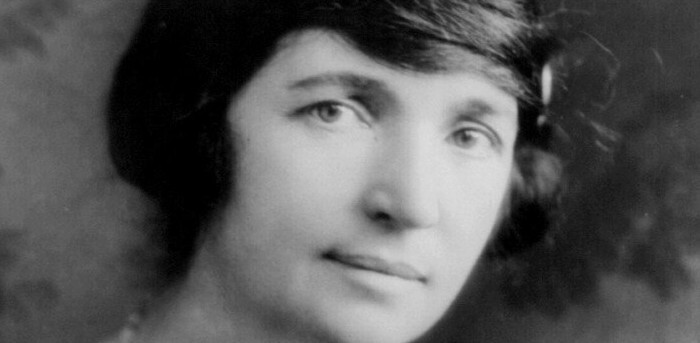From Poop Plugs to Pills: The History of Birth Control

Considering how long people have been shoving stuff into or over their junk in an effort to prevent pregnancy, birth control is still pretty dumb. There’s all those hormonal side effects, the risk of finding yourself in a Sex and the City episode when your diapgragm gets stuck, needing to ask the pharmacist to unlock the condom case, and even then, they can tell you “no” if you don’t look godly enough. Still, it could be a lot worse.
Lint

One of the earliest documented birth control prescriptions from around 1550 B.C.E. was for a substance made of honey, acacia leaves, and lint that was inserted vaginally to block sperm from entering the uterus. And to think, these days, we just throw it out.
Malnutrition

One of the easiest ways to prevent pregnancy in the ancient world was to already have a baby. Between work, low availability of food, and breastfeeding (which already provides some natural hormonal pregnancy prevention in addition to burning a ton of calories), ancient postpartum women often had too little body fat to facilitate conception. Next time you house a cheeseburger, just explain that you’re a beautiful fertility goddess.
Crocodile Dung

For the beautiful fertility goddesses of Ancient Egypt, animal poop was believed to contain spermicidal properties or at least plug things up, crocodile dung being the poop of choice until it was replaced by elephant dung at some point over the millennium. Probably, it was just whatever was lying around after inconsiderate crocodile or elephant owners took their pets for a walk.
Silphium
In Ancient Rome, an herb called silphium was revered as a wonder drug that was, among other things, possibly the first truly effective birth control. In fact, they loved (and used) it so much that it went extinct over the course of about 50 years.
Cedar Oil

Over in Greece, Aristotle recommended an “application of oil of cedar to the womb prior to intercourse” to prevent pregnancy. It’s clear how the oil was supposed to get up there, so we can assume fisting was involved.
Ancient Condoms

Some form of the condom has existed since the Bronze Age, though back then, they were made from considerably less comfortable materials like animal guts, treated paper, or linen. They had to be tied on with a bow to keep it on, but at least your dick looked fancy.
Lemon Halves

If any historical figure was most concerned about birth control, it was Casanova. In what was almost certainly a hasty and protested experiment, he figured out that a squeezed-out lemon half could be inserted over the cervix to block sperm.
Knowlton’s Injections
In 1832, a definitely dude doctor named Charles Knowlton concocted a solution of “salt, vinegar, liquid chloride, zinc sulfite, aluminum potassium sulfite” to be injected into the uterus with a syringe after intercourse to prevent pregnancy. Aside from being, you know, scary chemicals, talk about a mood-killer.
The Womb Veil
With the advent of vulcanized rubber in the mid 1800s, one of the first modern diaphragms was designed by Dr. Edward Bliss Foote and became popular with Victorian women. Because everything in Victorian times had to be shrouded in euphemism, it was called a “womb veil,” as if your uterus was going to a fancy party.
The First Birth Control Clinic

The first birth control clinic probably existed a lot earlier than you think. It was opened in 1882 by the first woman to become a doctor in the Netherlands, Aletta Jacobs, after she hopped enthusiastically onto the sticky but revolutionary diaphragm train.
Rendell’s
Meanwhile, in England, the go-to method from the late 1800s to World War II was a quinine and cocoa butter formula known as Rendell’s that became the “first commercially manufactured birth control suppository.” It may have been squishy, but at least their cervices were silky smooth.
Planned Parenthood

Of course, Planned Parenthood founder Margaret Sanger opened the first American birth control clinic in 1916, but it didn’t go down anywhere near as well as in those depraved Netherlands. It was closed down after 10 days by the fuzz and Sanger was imprisoned for a month before the court allowed her to reopen two years later. No word on what happened to all those seized condoms and diaphragms in the meantime, but we like to think “funny hats.”
Silkworm IUDs
In the late 19th and early 20th centuries, physicians began developing the first intrauterine devices, most notably Ernst Grafenberg. (If that name sounds familiar, it’s because the G spot was named after him.) His IUD was made of silkworm gut and silver wire, though, which tells you how desperate women were for reliable contraception.
Latex Condoms

After latex was invented in 1920, pretty much the first thing they did was start making dick covers with it. The latex condom proved much more popular than its predecessors, mostly because it was stretchy enough that you no longer had to go get a special dick fitting.
Birth Control Pills

On May 9, 1960, the FDA approved the first birth control pill after decades of scientific toiling. Perhaps because it took so long, the birth control pill has changed little since, and although there are now all kinds of rings and shots and implants, the hormones involved are still basically the same, proving that “mostly” is good enough for science when it comes to solving women's problems.
Top image: Polina Tankilevitch/Pexels